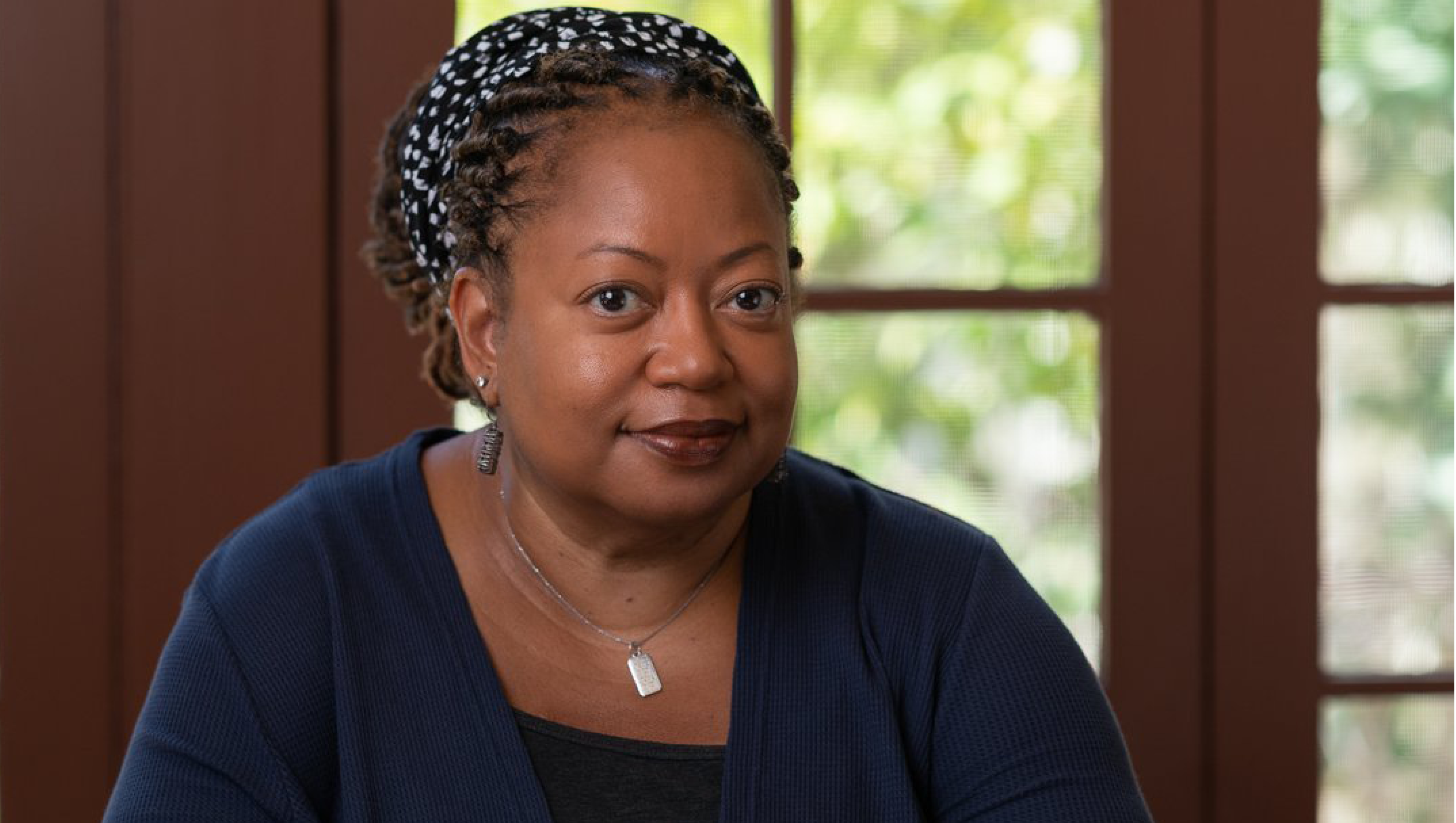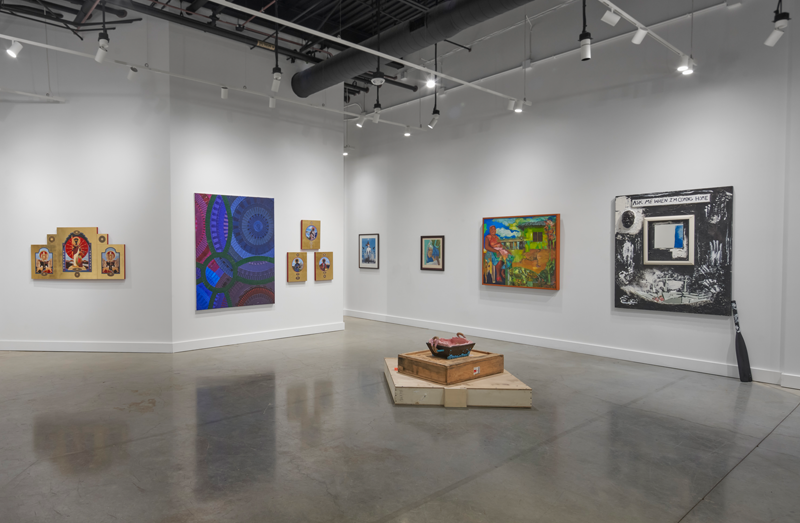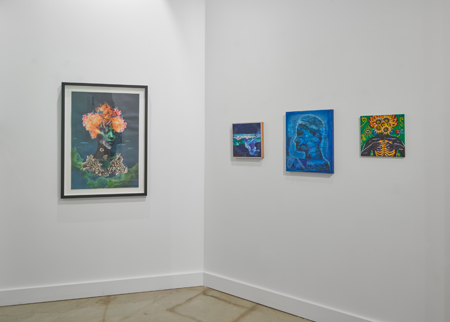
Kathie Foley-Meyer is a mixed media artist whose work explores themes of interconnectedness, memory, visibility and transparency. She completed a Ph.D. in Visual Studies at UC Irvine, where her dissertation project focused on the ocean memory of Black lives lost during the trade in human beings from the African continent. She received her M.F.A. in the Writing Program in Critical Studies from California Institute of the Arts. As an arts advocate, she served on the board of Los Angeles Contemporary Exhibitions from 2011 to 2019, with the last three years as chair.
What was your role in curating "Descent & Transformation, Vol. I: Voyages to the Americas"?
My role in curating the exhibition was to select a group of artists whose work fits into the purpose of a multi-campus grant, which is a research collaboration exploring the routes of enslavement in the Americas. I was also charged with creating public programming that would engage professors and students working on topics related to the grant, which is expansive, as it includes not only the Americas, but also, in the description, Black Pacific Worlds and Caribbean destinations, as well as locations such as Hawai'i. A second component and a highlight of the programming was the October 24th virtual panel "Chasing the Diamond: The Black Pacific, Ocean Memory & Slave Trade Routes to the Americas" which featured six professors in the UC system, a UC Irvine Ph.D. candidate and an Olympic athlete and creator of a nonprofit focused on swim instruction for people of color.

In working with the supervising professor on the project, Dr. Alex Borucki, who created the Intra-American Slave Trade Database along with professor Gregory O'Malley of UC Santa Cruz, we realized the exhibition could also serve as an introduction to the database slavevoyages.org for people who might not otherwise encounter it. The database is currently housed at Rice University in Houston, Texas, and is in the process of being updated visually and in terms of content, so having the artist April M. Frazier, who is in the exhibition and conducted a workshop on the UCI campus the week after the exhibition opened, was a star-aligning moment in terms of our goals for the project.
During my final year at UCI, April and I conducted a workshop at Rice. It was extremely valuable to me in terms of seeing how the community not only engaged with the material during the workshop but also connected it to the history of the trade locally and in other parts of Texas. This newest portion of the database contains over 27,000 voyages and spans over three hundred years so the amount of data is considerable. Of course there were artists involved in the exhibition whose recent and ongoing work dovetailed quite naturally with the theme of the exhibition, and making those discoveries along the way, as happened with Chelle Barbour, June Edmonds, Mark Greenfield, Nicole Maileen Woo, George Evans, Michael Massenburg, J Michael Walker and Mustafa Ali Clayton, was another extremely rewarding part of the process. It was also true of an early conversation I had with Dr. Ayasha Guerin, who was the only panelist who was also a participating artist in the exhibition.

A highlight of curating this exhibition for me was that several of the pieces grew out of conversations I had at the very beginning of the planning process, and it was very exciting for me to see how everything played out. This was the case with Diana Sinclair, Lyndon Barrois, Noah Humes, Ellamaria Ray and April M. Frazier. Another highlight was the organic discovery of two artists who I connected with via articles contained in an edition of the Ethnic Studies Reader in 2021 on the subject of Black Pacific Worlds, specifically Mia Arvizu, whose work was featured in the edition (in black and white photos, but their vibrancy still came through), and Nicole Maileen Woo, who I found via the website of The Pōpolo Project, a nonprofit that projects, protects and preserves Black culture in Hawai'i.
Finally, working on this exhibition was an opportunity for me to work with artists whose work I have been admiring for some time, and artists whose work inspires me as I create my own, as was the case with Toni Scott. These artists are doing critical work at a time when the threat of suppression is rising for the researching and teaching of the history that is the underlying theme of this project. It is my hope that the exhibition inspires future exhibitions and public programming.
What do you hope viewers will walk away with after seeing the exhibit?

I hope that viewers will engage with the exhibit in a way that helps them to think about the implications and historic threads of the global trade in human beings from the African continent that are visible in our present moment. I hope viewers are walking through the exhibition and thinking "How did we get here?" among other things. I hope viewers who travel to some of the regions represented in the exhibition will think of it when they are touring; think about how the global slave trade effects the populations they encounter in their travels. I also hope that they are excited by the diversity in mediums and styles of the artists and the choices the artists have made to express their inspiration for creating work about the Black Pacific.
What's next for you? Projects you're excited about?
What's next for me is focusing on my own work, as well as some projects with members of the Ocean Memory Project cohort. There will be a "Descent & Transformation Vol. II," which will focus on the residence time presence of Black bodies in the global ocean system. I'll begin posting about it on my Instagram page as things progress.
Interested in reading more from the School of Humanities? Sign up for our monthly newsletter.
